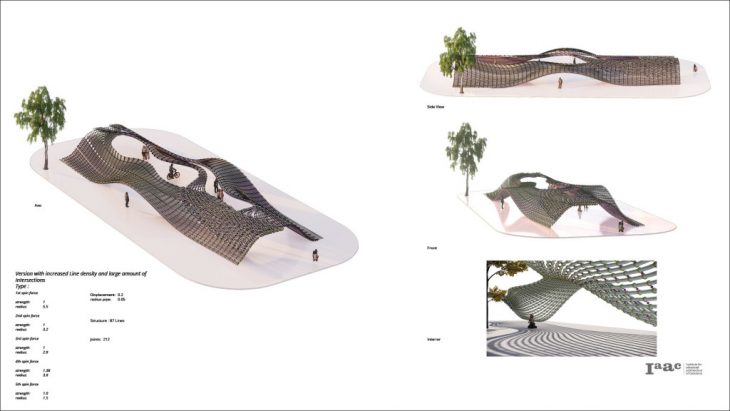Description
This project uses a non-linear, iterative strategies of subdivision (weaving by particles) for the design of a coherent formation/demonstrator/pavilion, focusing on its constructability as clarity and
coherence of geometry, detail and process. The computational approach is divided into a primary woven structure with their respective intersection points and the secondary structure following the same logic. The primary structure begins with the generation of a surface from which the particles are created and moved by using spin forces. The resulting nodes between the lines are evaluated to control the weaving distance. A list of elements are then created, to function as connections between the primary curves. The secondary structure emerges from equidistant points on the resulting primary curves. The following images explains visually the specific strategy and overall system.
Data structure
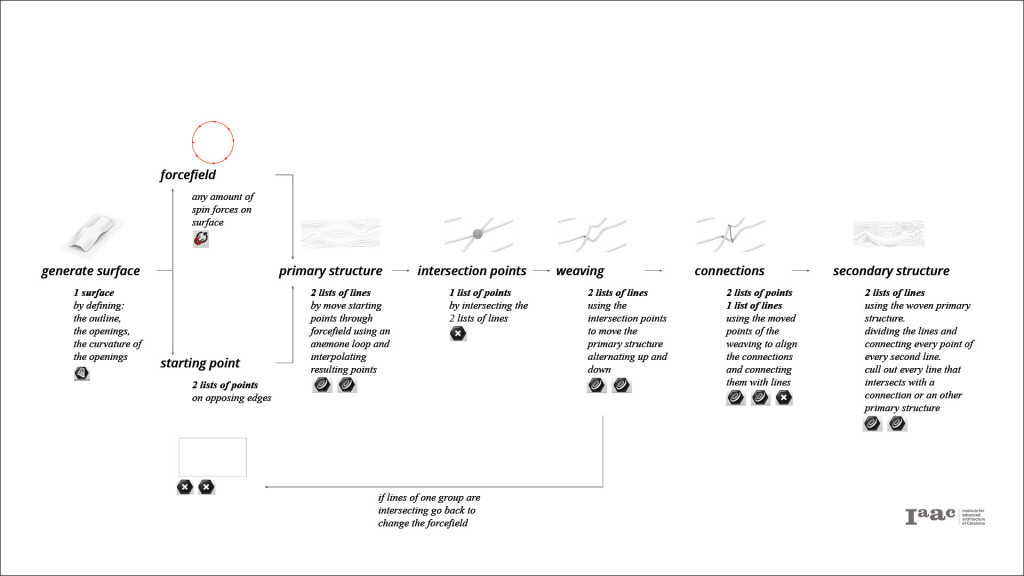
Process Steps
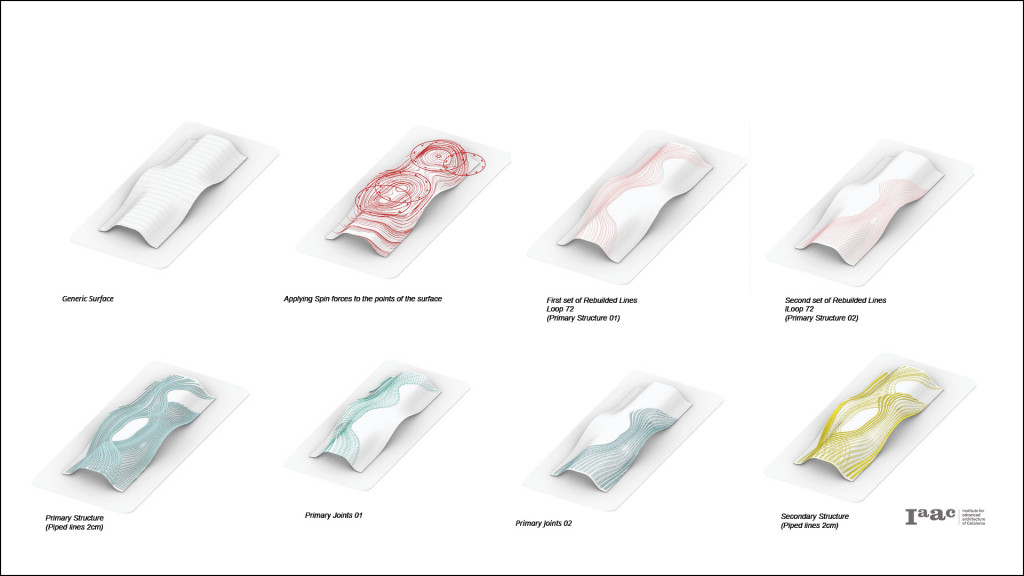
Shell construction – Basic principal
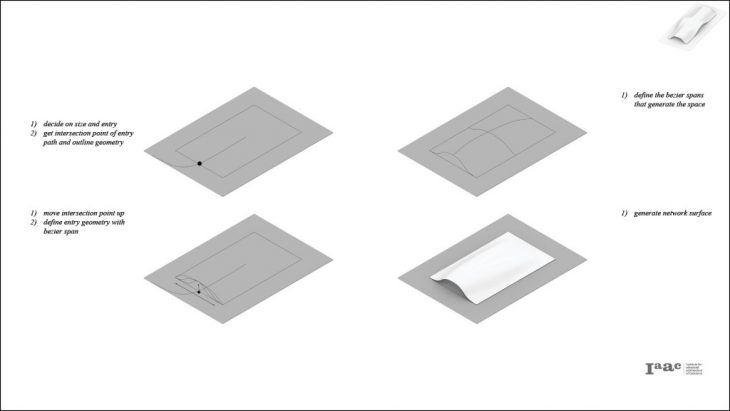
Shell construction – Entry variations
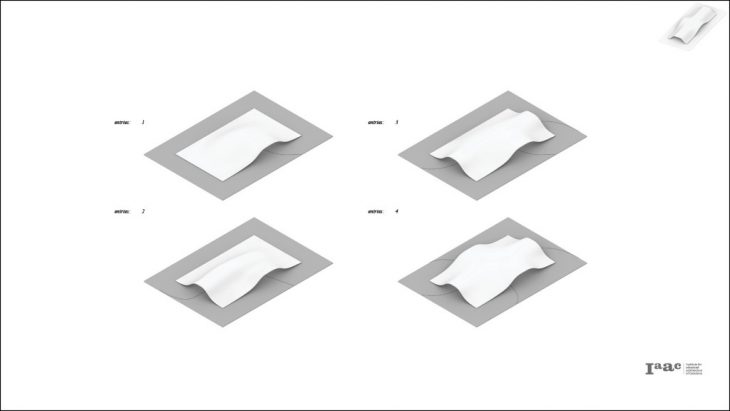
Shell construction – Entry geometry variations
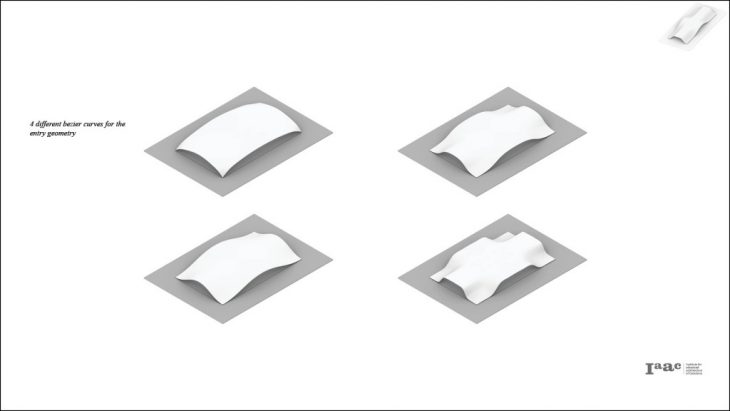
Weaving through spin forces 2D principals – basic generation
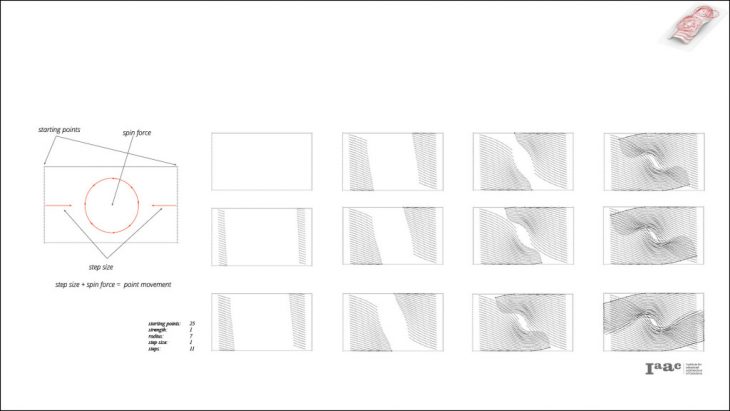
Weaving through spin forces 2D principals – step size variations
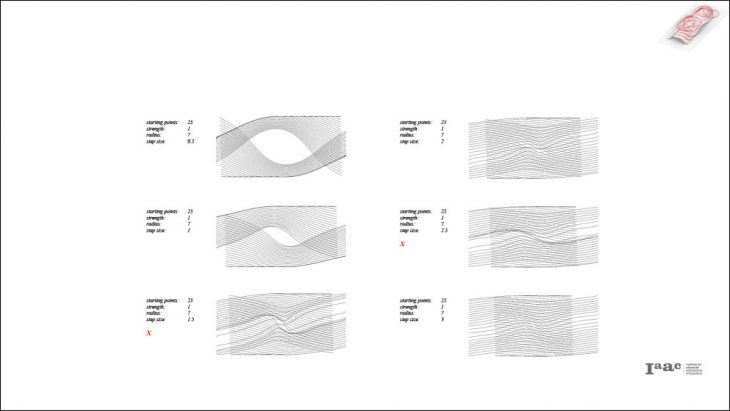
Weaving through spin forces 2D principals – strength variations

Weaving through spin forces 2D principals – radius variations
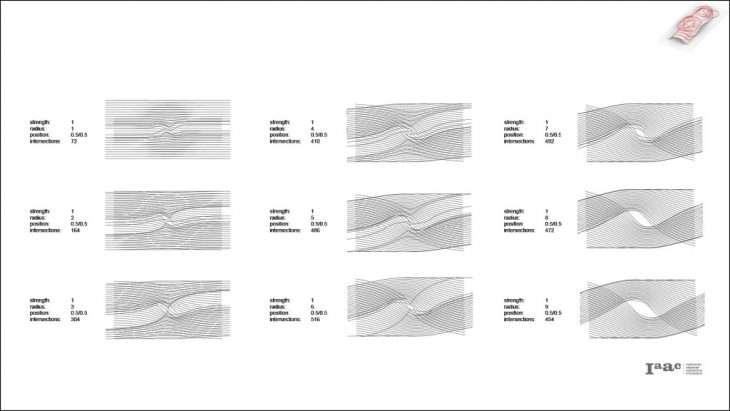
Weaving through spin forces 2D principals – position variations
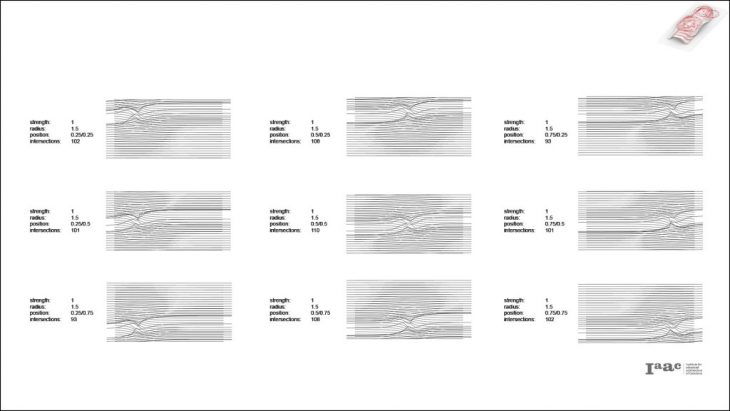
Weaving through spin forces 2D principals – amount variations
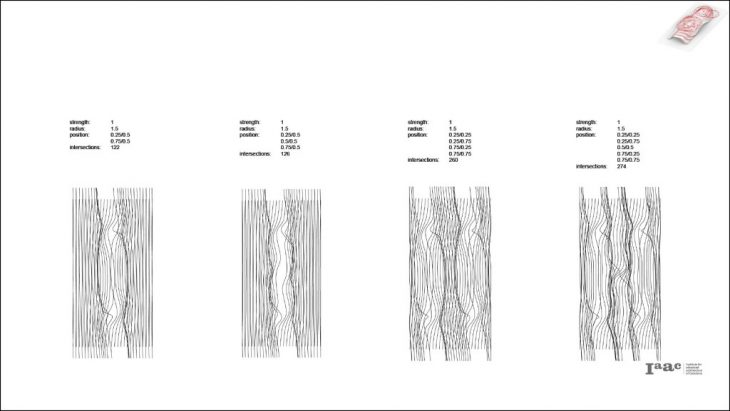
Weaving through spin forces 2D principals – direction variation
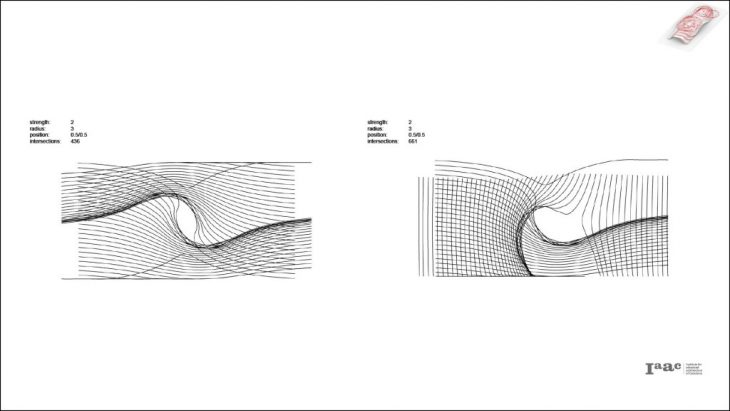
Structure Density – Basic principal / on surface
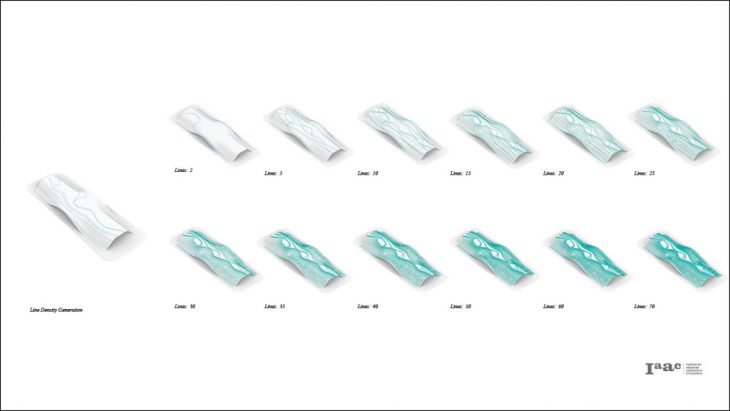
Generating Spin forces – Spin forces Principles
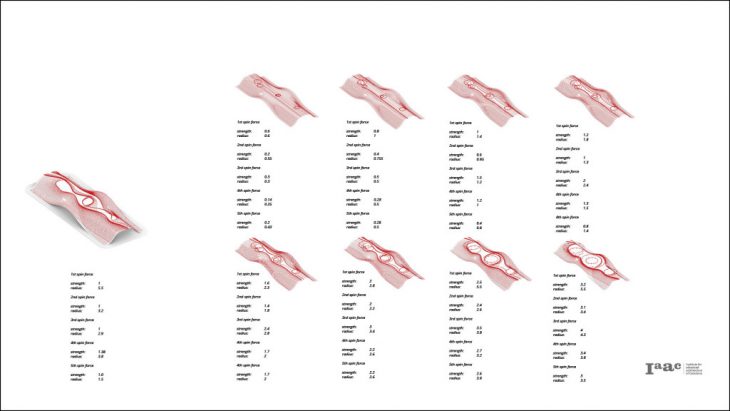
Generating Spin forces – Using spin forces for weaving

Generating spin forces on Surface – Using spin forces for weaving
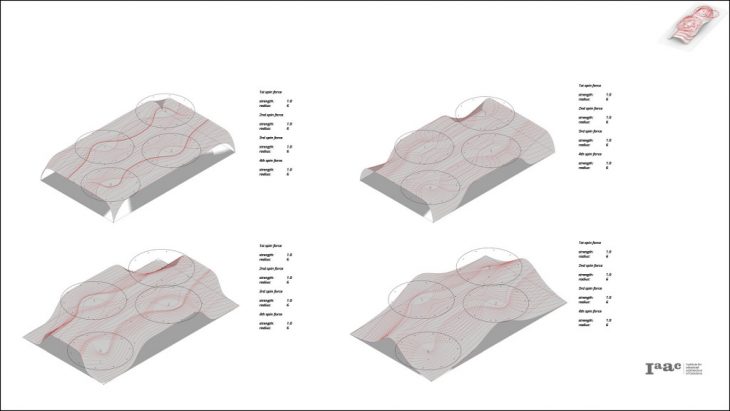
Generating spin forces on Surface – Using spin forces for weaving
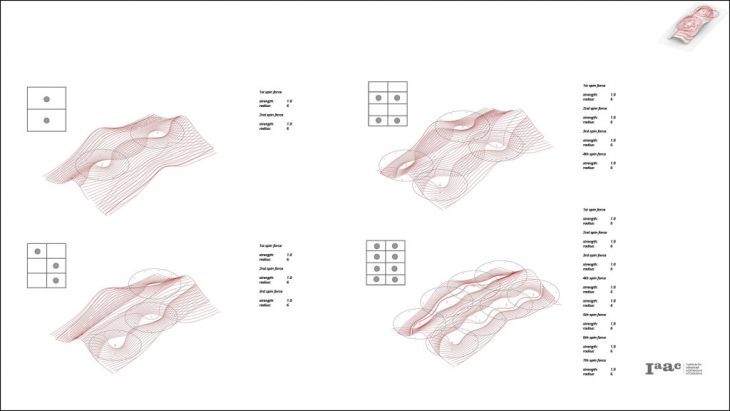
Generating spin forces on Surface – Using spin forces for weaving
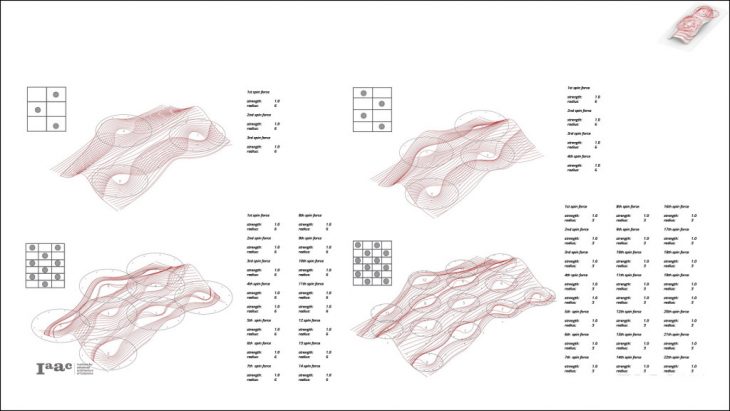
Defining connection points – Basic Principles – Overall Strategy Layout
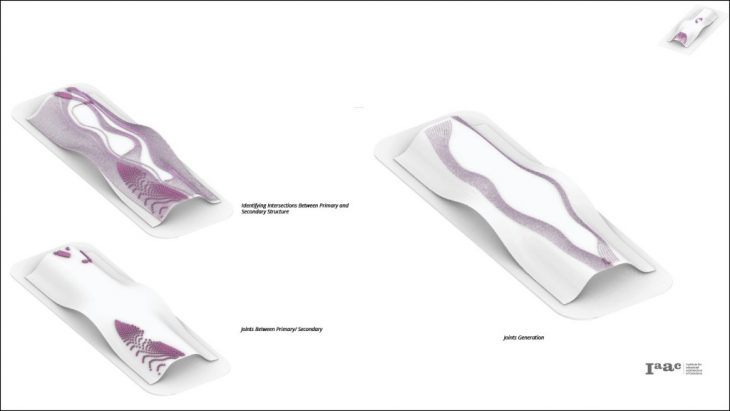
Weaving through spin forces 3D principals – basic principal
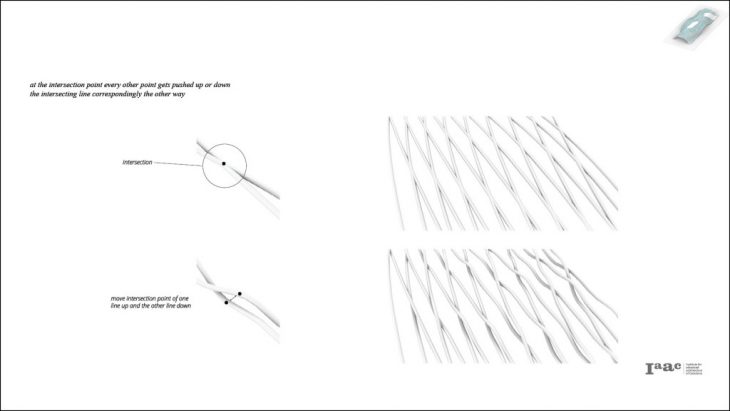
Weaving through spin forces 3D principals – Intensity variations
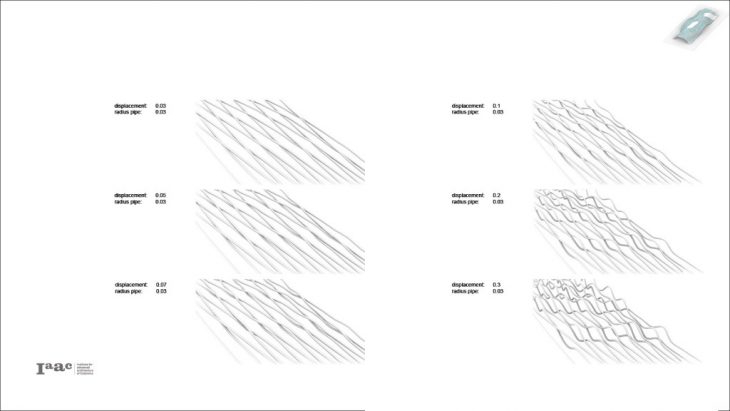
From intersection to connection
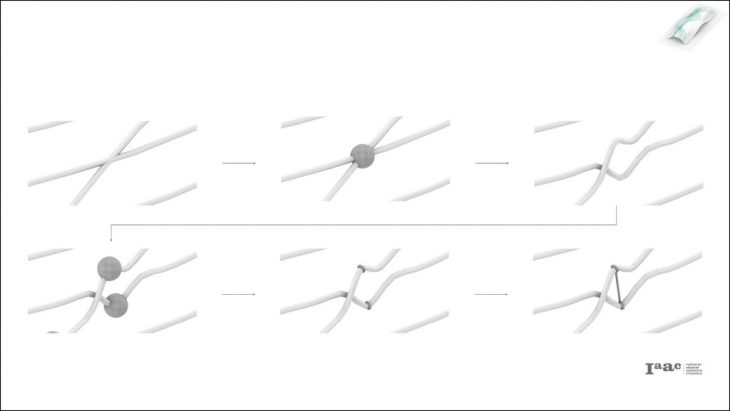
Connections – distance variations
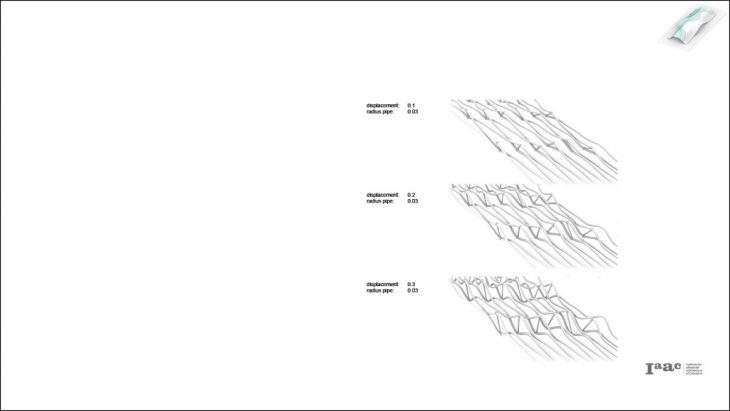
Connections primary structure – Overall Strategy Layout
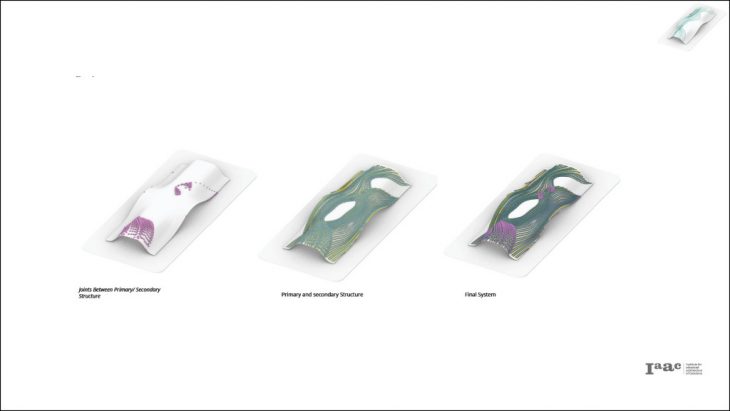
Secondary structure
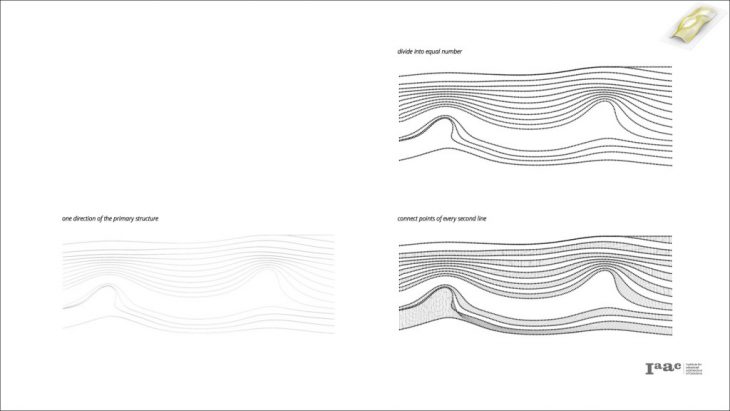
Secondary structure

Overall system
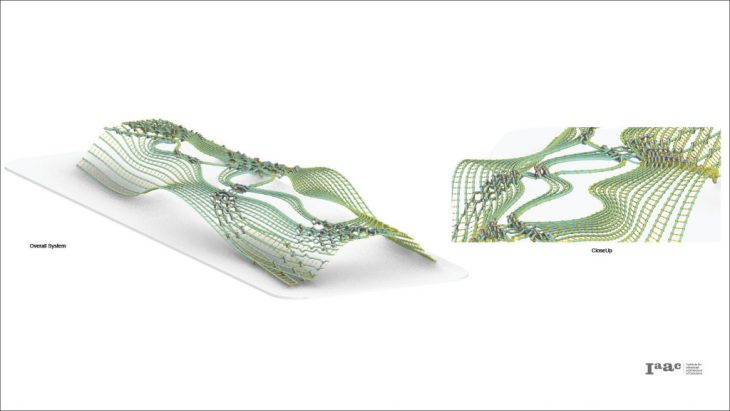
Connections System – Close up
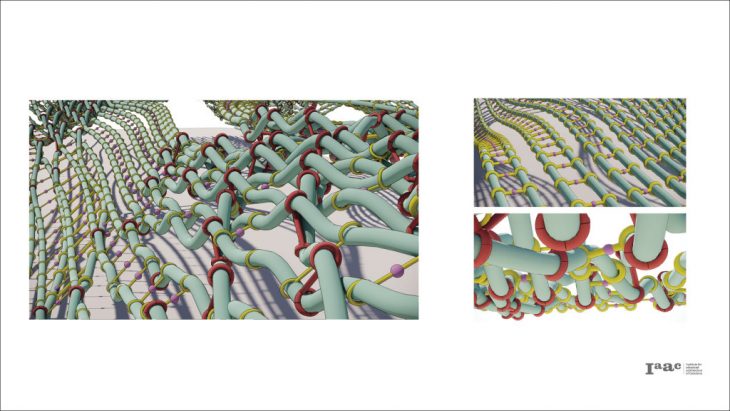
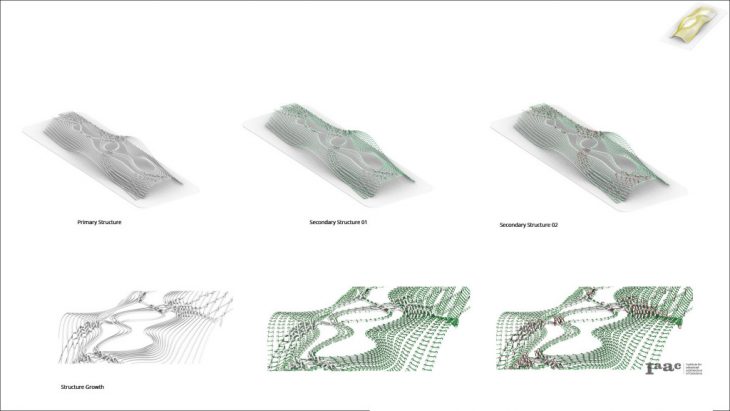
Detail Approximation
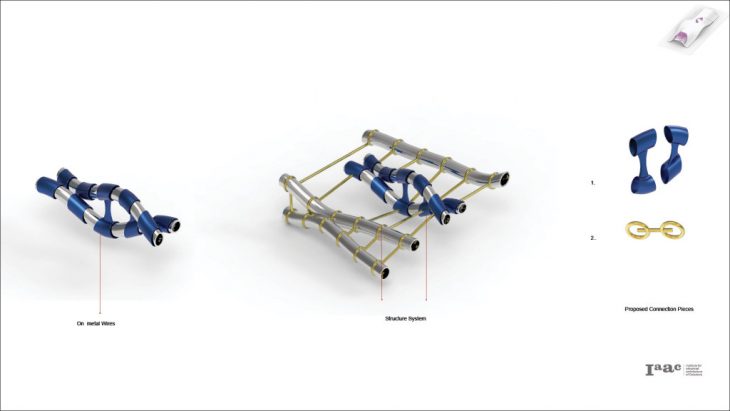
Studies – Application on the system
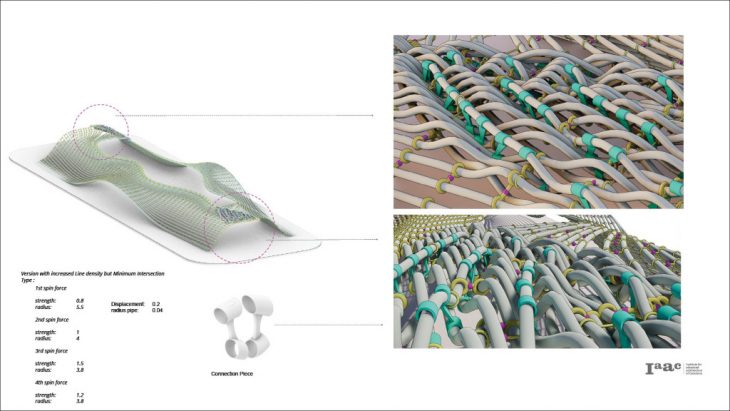
Proposed materiality – Metal Wires
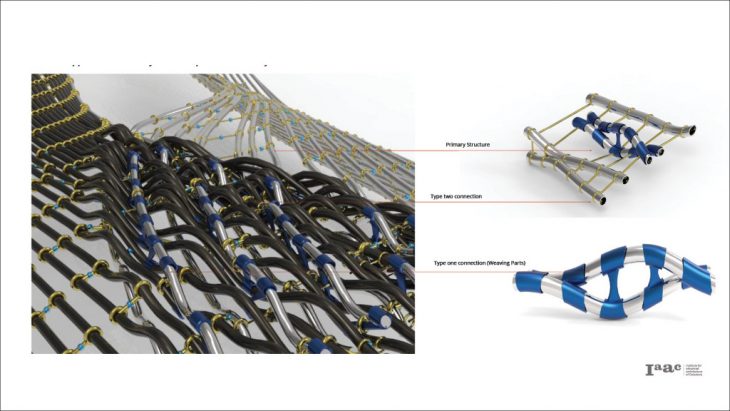
Secondary structure – Proposed materiality – Metal Wires
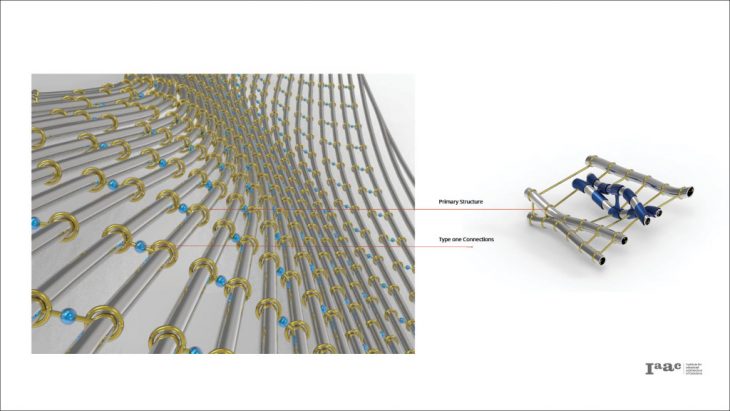
Overall System – Desired Density
